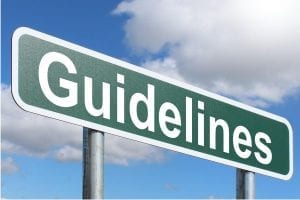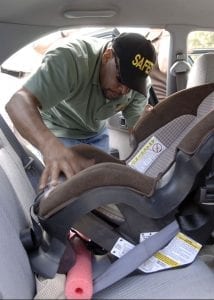This article provides law information and resources for parents, caregivers, and child safety advocates in relation to New York booster car seat laws and seat regulations. If you’re the parent of a toddler or small child between the ages of 4 to 8 years old, this article contains rules, tips, and tools and even laws to help your child to remain safe and for parents to remain in compliance with New York child restraint laws.
Car Seat Law

Car Seat Laws And Guidelines
Booster car seat laws and regulations generally follow the same basic guidelines when it comes to individual states. If you are a resident or visitor of New York State and want to be sure of exactly what New York seat guidelines and regulations are to keep your little ones safe while riding, continue reading to learn more about the specific laws on booster seat for your area.

NYC Laws And Regulations On Booster Seat
The standard requirement for the safe and legal operation of a booster seat in The State of New York are listed below. Child passenger restraint laws have been in effect in the State of New York since April 1, 1982.
Since that time, the laws and regulations regarding child passenger restraints have evolved based on our understanding of the importance of child passenger safety.
Children age 4 to 8 years old and weighing over 40 pounds are required by law to be secured in a booster seat while riding in a passenger vehicle seat. That applies to all vehicles, from the smallest convertible seat to the largest pickup trucks.
“An appropriate child restraint system is one that fits the child according to the manufacturer specifications for height and weight.”

Importance Of Seat Safety Law
Child passenger safety laws and regulations have been put in place at a local and national level to protect child passengers from injuries and fatalities if the car that their parent is driving is involved in an accident, such as car crashes—after all, even a minor crash could cause a lot of damage to everyone involved, be it an adult or a child.
Booster seat could be forward or rear-facing seat. They are specifically designed to support the height and weight of children between the ages of 4 to 8 years old. It provides cushioning for your child with attached safety hardware and a shoulder belt that raise your small child to the correct level for seatbelt positioning. The lap and shoulder belts should also fall across your child’s upper thighs, and the tether should be securely attached to the vehicle’s tether anchor for maximum safety. Typically, tether anchors can be found on the rear shelf behind the backseat.
Important Note: Booster seat, a narrow seat included, are made for use only by children between the ages of 4 and 8 years old. Children that are outside of the required height, size, or weight limits and requirements may not fare well should an accident occur while operating a booster seat outside of the specifications of vehicle manufacturers.
Local Booster Car Seat Laws
New York State Governor’s Traffic Safety Committee provides information and regulations for child safety seat and for parents and caregivers. This agency also provides information, training, and referral for child passenger-related services.
If you aren’t sure where to get your own booster seat or if you have additional questions about booster seat use, safety, and education, contact The New York Governor’s Traffic Safety Committee for more details. You can also find out whether you should get a rear seat or forward-facing car seat position so that your child will be most comfortable.
This committee specializes in providing education and training related to child passenger safety laws and equipment. The list of related programs and recommendations that the Traffic Safety organization offers are listed on the New York State website.

Conclusion About The Car Seats
Now that you have a better understanding of New York laws and regulations on booster seats you should feel more confident when selecting your child’s booster seat and confident that you’ve made a safe and informed decision.
Be sure to follow all recommended and required manufacturer’s instructions to keep your child safe and remain in compliance with New York State traffic safety laws. Now that you have a better understanding of New York laws and regulations about it, you should feel more confident when selecting your child’s booster seat and confident that you’ve made a safe and informed decision.
Be sure to follow all the recommended and required manufacturer specifications to ensure the safety of your child passenger and to remain in compliance with New York State traffic safety and car seat laws. Carefully consider the infant seat that suit your child’s shoulder or body so that you can find the best seat to give them safety and comfort.
Frequently Asked Questions:
Does A 6-Year-Old Need A Car Seat In NY?
When Can Kids Move Into Backless Boosters?
Is Backless Car Seat Law Legal?
Can My 10-Year-Old Sit In The Front Seat In New York?
Does Booster Seat Expire?
Like other child safety seat, they have expiration dates. The expiration date is typically determined by the manufacturer and is based on factors such as the materials used, safety standards, and potential wear and tear over time. It is important to check the manufacturer’s instructions or labeling on the seat itself to determine if there is an expiration date.
The expiration date is meant to ensure that the seat remains structurally sound and meets the necessary safety standards. Over time, the materials in the seat may degrade or weaken, reducing its ability to protect a child in the event of a crash.
Are Rotating Car Seats Safe?
Booster car seat laws emphasize the use of a child safety seat in the rear facing position for young children, transitioning to forward facing car seats as they grow, ensuring the right car seat for each stage of development. An adult seat belt or safety belt is not sufficient for small children; instead, a combination of a lap and shoulder belt is recommended for those in booster seats, as only a lap belt may not provide adequate protection. When transitioning to a forward facing seat, it’s important to consult the car seat’s manufacturer guidelines to ensure proper use of safety belts, including the shoulder seat belt, for the highest level of safety in both rear facing car seats and when moving to forward facing positions.
What Is The Weight Limit For An Infant Car Seat?
The weight limit for an infant car seat can vary depending on the specific model and manufacturer. However, most infant car seat is designed to accommodate babies weighing between 4 to 35 pounds (1.8 to 15.9 kilograms). It’s important to note that weight limits can differ between different car seat models, so it’s crucial to consult the specific manufacturer’s guidelines for the particular car seat you are using.
Additionally, some infants also have height limits, typically around 32 inches (81 centimeters). Once a child exceeds either the weight or height limit specified by the manufacturer, it is necessary to transition them to a different type of car seat, such as a convertible car seat or a combination seat, which is appropriate for their size and weight.
Does The Car Chair Go Behind The Driver Or Passenger?
Whether the car seat goes behind the driver or passenger depends on the child’s weight and years of age, as well as the vehicle owner’s manual recommendations, including weight or height limits for air bags. Rear seats are generally safer for a child ride, where they can be properly restrained in convertible seats that meet motor vehicle height and weight requirements. It’s essential to ensure the child’s body is suitable for the rear facing weight limit before transitioning to a position that considers the passenger air bag deployment area, especially if the child weighs within specific weight or height limits.
How To Install A Car Seat?
References
New York State Website: http://www.safeny.ny.gov/sesa-ndx.htm#regarding
AAA Driving Safety: https://drivinglaws.aaa.com
800Bucklup: https://www.800bucklup.org/car-seat-laws/new-york/
Last Updated on May 7, 2023 by Harold Chan
DISCLAIMER (IMPORTANT): This information (including all text, images, audio, or other formats on FamilyHype.com) is not intended to be a substitute for informed professional advice, diagnosis, endorsement or treatment. You should not take any action or avoid taking action without consulting a qualified professional. Always seek the advice of your physician or other qualified health provider with any questions about medical conditions. Do not disregard professional medical advice or delay seeking advice or treatment because of something you have read here a FamilyHype.com.